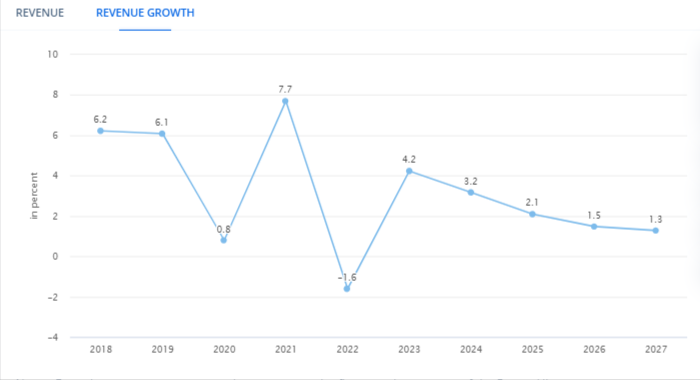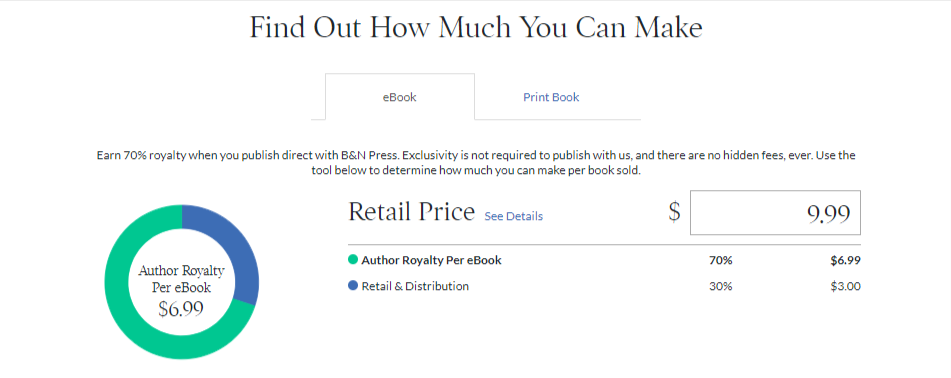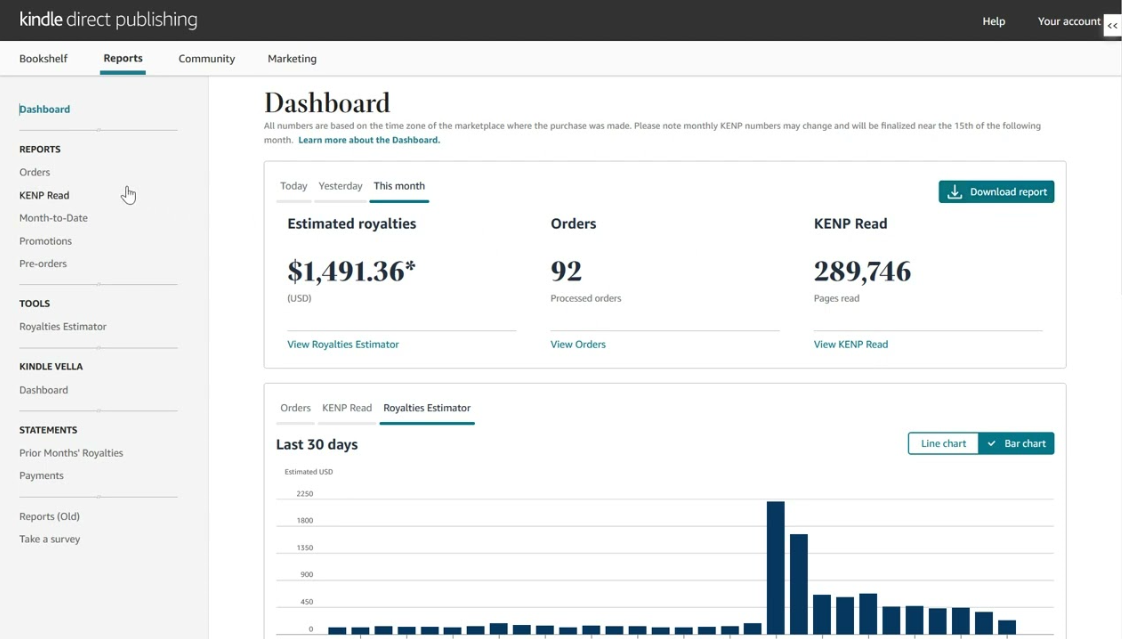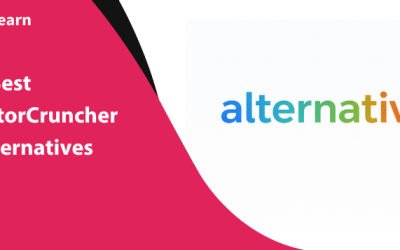How to Sell Ebooks Online in 7 Easy Steps
Whether you plan to sell your ebooks to earn passive income, as lead magnets, or just out of the love of sharing your knowledge, an ebook is an amazing arsenal! These portable, knowledgeable and profitable companions have evolved as a great resource!
If you already have the information, they take little time to create, and they could earn you a recurring income! With the number of ebook readers expected to reach $1.1 billion by 2027, this is the right moment to sell ebooks online!
But, if you are confused about how to sell ebooks online, this blog will give you a headstart with some easy steps! So, have you picked up your digital pens?
Is it Profitable to Sell Ebooks Online?
Yes, selling ebooks online is indeed a profitable pursuit!
First off, ebooks are essentially nuggets of valuable information packaged and sold online. And ‘Information is the most valuable yet understated commodity of current times.”
So, if your ebook touches a lesser-known and on-demand subject, it’s sure to be a valuable resource for people facing the problem! Hence, they wouldn’t mind spending a few bucks for your resource.
The ebook market is massive! Moreover, the industry is expected to generate revenue of $14.61 by 2024. Digitalization has caused a monumental shift towards digital reading, as evidenced by the $85 million revenue from eBook sales in the US.

(Source: Statista)
Here’s a critical statistic that further adds to the digital vs. print books narrative:
Ebooks sell between $4.99 and $10 on average and can generate around $1.5k per month if you sell 5 ebooks daily.
Lastly, given their low production cost and large-scale distribution to a global audience, they are indeed profitable!
How to Sell Ebooks Online: 7 Easy Steps
As you still read this blog, you might have decided to create your first masterpiece — an ebook! Creating an ebook and earning your first $1 sale might seem a tough row!
But, how to make money selling ebooks online?
By following these steps, it might seem like an effortless maneuver! So here’s your playbook covering everything you need to know!
Step # 1: Research like a Pro
The first step that fuels any creative process is research! If you do your homework right, there’s nothing from winning those raving fans. So, let’s see how to lay the right foundation!
1. Pick Up a Niche & Choose a Lucrative Topic
It’s super simple: you must be clear about what you’re writing!
Here’s how you can figure out the right niche:
- Self-assessment: What are you good at, or what drives you?
Identify your strengths, expertise, areas of interest, and things you’re passionate about. For example, if you are interested in fitness, you could write on how to sell a fitness program online.
- Market Research: What’s the latest fad?
Analyze the current market trends in your chosen niche and find an existing problem-solution gap. The best places to discover what’s trending are the Kindle bestselling list, Amazon search, etc.
- Competitor Analysis: How are your peers nailing it?
Sneak peek at what the top players are up to. Check their reviews, their subject, blurbs, etc. Also, check if any A-listers have penned an ebook in your niche.
- Keyword Analysis: What people are searching for?
Leverage keyword research tools like Semrush, Google Keyword Planner, and Google Trends to identify popular search queries and phrases.
- Feasibility: Is it worth it?
Lastly, validate your niche by gauging its profitability. Be super specific to resonate with your audience. Discuss your topic with real people, communities and social groups.
2. Define Your Target Audience & Identify What They Want
Question yourself when identifying your target audience: Why are you writing the ebook? There could be several reasons: to become an expert, to gain more visibility, to create passive income, to share your knowledge, and to generate leads.
Here are a few questions for performing audience research:
- Who is your ideal reader?
- What are their demographics: age, interests, education, location, and income?
- What are their pain points and challenges?
- What are their values, beliefs, and subcultures?
- Why are they purchasing the product?
Being clear on why you’re writing and identifying the target audience helps you figure out what to write and how to write.
Writing a generic book could end up with no one reading the book! Interact with people and identify their real problems. This helps to write a book that instantly forges a connection and resonates with them!
Step # 2: Let the Words Flow
Now that you have a good grasp of the audience’s needs, interests and pain points, consider your purpose, target audience, and unique value proposition to kickstart the writing process!
1. Come up with a Catchy Title
The title of your ebook is not just a tag or a phrase; it’s a promise! It explains to the readers what the book is about and how they’ll benefit from it!
So, make sure you’re clear, accurate, compelling and, of course, creative!
Here are the key elements of a compelling ebook title:
- Keyword: The topic of the book
- Hook: The twist or unique selling proposition
- Benefit: Value or outcome it offers
- Modifier: Emphasis or urgency to buy the ebook
Here are a few tips to make click-worthy titles:
- Create short and descriptive titles
- Incorporate keywords
- Include a specific number or a method to achieve your outcome
- Make it memorable
For example, “5 Steps to Write Like a Pro”, “The Ultimate Guide to Build the Life You Desire”, “Found” or “First Lie.”
2. Create an Outline
Yes, writing is time-consuming, and it could be daunting! So, an effective way is to structure your content well!
Starting from a blank page is overwhelming, so briefly list out the points that you wish to cover. Decide all you wish to include in your ebook, cut the unnecessary sections. This way, you can speed up your writing process!
Imagine scrolling through a huge information block without bullets or visual breaks. Would it be engaging? No, right?
An effective ebook copy follows the following structure:
- Table of Contents
- Introduction
- Main Body – Outlined into key chapters along with sections and subsections
- Conclusion
Enrich your content with case studies, insights from expert interviews, and research papers. Grace it with visual elements and conversion-driven CTAs!
Nuggets of information are easier for readers to consume! Divide each chapter into headings, subheadings, bullets, etc.
Tip: The average attention span of readers is only eight seconds, and it is gradually declining. An effective strategy to optimize your ebook is to write only what’s needed to educate the readers.
3. Write Your First Draft
“Perfection is the death of creativity!” Remember your first draft is always crappy! So, don’t try to be perfect; just let the words flow naturally! You can always set the tone and rhythm later.
Focus on putting your thoughts and ideas down on paper first.
Although you might expect your mind to be an idea-generating machine, writer’s block is inevitable!
Julian Shapiro’s creativity faucet approach is worth considering here:
“Visualize your creativity as a clogged pipeline with a single faucet. The first thing that comes out is always wastewater (bad idea). In fact, the wastewater paves way for clearwater.”
So, what can we learn: there is no shortcut to clarity. Don’t discern your ideas as good and bad; just jot them down!
Whether you agree or not, a blatant informational read is pretty boring. Consider backing up your knowledge with proof: examples, research links, real-life scenarios, etc.
4. Fine-tune Your copy
“To write is human; to edit is divine.” Remember these famous lines from writing genius Stephen King.
You might have come up with the best topic, scoured through the internet and tons of resources, and done a fair amount of marketing. But what if your ebook is a “comedy of errors!”
The result: your ebook would lay to rest in the abyss!
There are three ways you can edit your ebook: self-editing, using editing tools, and hiring an editor. Before forwarding your manuscript to a professional editor, go for two or three rounds of self-editing!
Follow the 24-hour wait rule for editing with fresh eyes! Read aloud to identify the natural rhythm.
Here’s a list of errors to watch out for as you don your Sherlock hats:
- Ensure an intriguing introduction, natural content flow and subtle transitions.
- Spot out major flaws or forests like repetitions, contradictions, logical errors, etc.
- Work on the trees like spelling, grammatical errors, typos, and punctuation.
- Validate your facts like numbers, statistics, names, etc.
- Cut the fluff and redundancies like “your own,” and “restored back.”
- Get rid of formatting complexities like inconsistent fonts, extra spaces, and capitalizations.
Step # 3: Good Design, Good Business
The human brain is hardwired to process visual content faster than text. Hence, a great design makes your ebook memorable.
1. Design a Professional Cover
While people say, “Don’t judge a book by its cover”, that’s exactly what we do. Quite right, isn’t it?
How many times have you fallen for a book with an enticing cover design?
Create a smart and appealing cover design that pitches your ebook to the audience! Design a cover that persuades your target audience and aligns with your topic.
If you don’t plan to hire a professional designer, create a masterpiece yourself. Use design softwares like Canva, Adobe Photoshop, or online tools like Visme, Adobe Spark.
These are the crucial elements that make an effective cover design:
- Title
- Subtitle
- Background Design and Brand Colors
- Author Name
- Company Logo/Name

(Source: SEOClerks)
An effective way to market your ebook through its cover design is incorporating brand aesthetics into it. This could include your brand colors, logo, font, image style, etc.
2. Choose a File Format
Once you are done with the cover design, it’s time to decide on the file format type. Depending on the platform you are selling your ebook online, you can choose your file format.
There are several ebook file formats, here are the four common ones:
- PDF (Portable Document Format)
PDF is the most widely-adopted and user-friendly file format for publishing ebooks. One major flaw of the PDF format is that it lacks screen adaptability or reflow across e-readers like Kindle or Kobo.
- EPUB(Electronic Publication)
EPUB is a versatile format for ebook creator software and publishers, such as Apple Books and Google Books. EPUB overcomes PDF’s reflow drawback and allows text to flow easily across diverse screens. Especially suitable for small screens like smart
- KPF (Kindle Package Format)
KPF is the golden format for all ebooks published on Amazon. Kindle Create Amazon’s free formatting software helps to create KPF files. However, KPF is not suitable with other e-readers or if you are publishing on other platforms.
- MOBI
It was a file format that was popular among e-readers earlier, but it currently seems to be out of place. MOBI has certain downsides in terms of audio and video support. However, it is still accepted by Kindle Direct Publishing (KDP) if it fits the publishing guidelines,
AZW, ODF, and IBA are a few other file formats for ebooks.
Step # 4: Choose the Right Platform
The publishing platform is another crucial aspect of selling your ebooks online. Your chances of success also depend on the platform you choose.
But how do you pick the right one for your ebook?
Here are the factors to consider when choosing the right platform:
- Usability & Flexibility
- Target Audience
- Purpose
- Content Format
- Reach
- Royalties
You can publish on dedicated publishing platforms, membership platforms, ecommerce stores or your own website. While Amazon KDP is the most popular choice for publishing ebooks, Smashwords, Kobo, and Apple Books are a few other choices to explore.
On the other hand, if you want to sell other digital downloads, then membership sites or ecommerce stores are an excellent choice.
We have covered a detailed section of the popular platforms at the end of this blog.
Step # 5: Pitch the Right Price & Publish
The golden rule is to price your ebook to find a sweet spot between customers’ affordability and earning profits from your sales!
As per many sources, an optimum price range is $2.99 to $9.99 when starting. By targeting a price above $9.99, you can expect a royalty of 70% per ebook.
You could keep it between 99 cents – $2.99 per ebook; this way, you get sales and also don’t eat on the profits. Those who have a decent fan base can charge higher.
Another factor to assess here is the value you offer to your readers! Have you curated unique or never-before-seen content? Then it’s worth charging a higher price.
Here’s a table to offer a quick overview of the royalties for different websites:
| Website | Royalty |
| Amazon | 70% (for $2.99 -$9.99)
35% (for books priced below $2.99 or above $9.99) |
| Barnes & Nobles | 60% -70% (for $2.99 -$9.99) |
| Smashwords | 85% of list price (through website)
60% of list price (through other retailers) |

(Source: Barnes & Nobles)
Step # 6: Spread the Word Out
Now that you have published your ebook, you’re just halfway through! You might have only been informed about it within your group; to drive sales, you need to put the message out loud!

Here are a few tested and tried promotional strategies your ebook:
- Create pre-launch buzz on social media with teasers, excerpts and introductory chapters.
- Share intriguing insights, thought-provoking questions, or polls related to your topic on social media.
- Promote your ebook with a high-converting post on X (Twitter) including limited-time free offers and ebook’s direct benefits.
- Create an engaging landing page to capture all the traffic from CTA’s in the ebook.
- Get into brand collabs with bloggers, influencers, and reviewers to expand your reach.
- Build an email list of prospective readers to send about launch events, offers, or free chapter downloads.
- Include ebook links in the header or footer of your high-converting blog posts.
- Go for a live launch event on social media to directly connect with your audience.
Step # 7: Monitor, Learn and Adapt
You are done with publishing your ebook and fair rounds of marketing. However, you also need to monitor sales and gather feedback to refine your product.
1. Track Your Ebook Sales
Whether your ebook is a bestseller or still struggling to make significant sales, monitoring your ebook sales is important.
First off, leverage a tool like Google Analytics to analyze your landing page on metrics like sessions, visitors, conversions, no.of downloads, etc.
Besides, websites that allow selling ebooks also offer analytics tools to track the downloads, demographics, and visitors.
For example, Amazon KDP’s reports show reports on estimated royalties, orders, payments, etc.

2. Gather Feedback and Tweak
If you are just starting out, you can’t become a writing maestro in a day! As Jack Welch quotes, “Feedback is the only definitive way to ensure you are on the right track.”
Feedback loops are an essential part of the writing process, as well as refining your ebook. But, how do you gather feedback once it’s in the marketplace?
Here are several sources to gather feedback:
- Reach out to beta readers online who review your ebook before publishing
- Send personalized emails or messages to leave a review on your Amazon page
- Join online book communities or dedicated book spaces like Wattpad, Scribophile, etc, to get feedback
- Run polls or host giveaways on social media and reward winners with a free copy. Later, ask the winners for a review.
- Use survey tools like Google Forms or SurveyMonkey and share it with your readers.
3. Diversify Your Revenue Stream
Once your ebook is well-received by the audience, try monetizing from alternative revenue streams. Audiobooks, online courses, and memberships are some of the best ways to earn further. This way, you can target different audiences and maximize your revenue!
7 Best Platforms to Make Money Selling Ebooks Online
Let’s take a look at the popular platforms to sell ebooks online:
1. Amazon KDP
Amazon KDP is by far the most popular choice for ebooks, dominating the market with an 80% market share. KDP allows authors to self-publish their ebooks and churn profits from the Kindle store. The best-selling authors even earn profits of around $1000 per month.
While the obvious advantages are reach, promotional tools, and profits, the competition to get noticed is high and exclusivity!
Supported File Formats: KPF, Microsoft Word, EPUB
2. Kobo
Rakuten Kobo is another favored self-publishing platform that sells ebooks on their websites or distributes them across public libraries. It also allows selling audiobooks and earns from e-readers and apps. The perks are the global audience, royalties, and no exclusivity.
Supported File Formats: EPUB, PDF, MOBI
3. Barnes & Nobles Press (Nook Press)
Being one of the largest bookstores in the US, Barnes & Nobles needs no introduction. Barnes & Nobles Press is its popular self-publishing platform that sells through its website and Nook devices. It has more than 1 million ebook titles in its store.
Supported Files Formats: EPUB, PagePerfect
4. Apple Books
It is Apple’s own ebook store, accessible by Apple users on iPads, iPhones, and Macs. Apple Books is also a major retailer alongside Google Play Books, offering book promotions, discounts and free books.
Supported Files Formats: EPUB and PDF
5. Shopify
Shopify is a leading ecommerce platform for selling ebooks and digital products. Customer support, marketing, accessibility, and ease of use are the key advantages of Shopify. Create an online store and set up your product page to sell ebooks from Shopify.
Supported File Format: EPUB, MOBI, PDF
Apart from the above platforms, you can also sell directly from your website!
Resources to Make and Sell Ebooks Online
Here’s a bonus section that could make your creative pursuit less overwhelming! We have curated a list of all the resources to make your first ebook worthwhile:
Online Cover Makers
- Canva (Free for basic use; subscription for premium features)
- Adobe Spark (Free)
- Book Brush (Paid)
- Cover Design Studio (Paid)
- BookCover Zone (Customized templates for a fee)
Stock Photos and Graphics
Best Creator Tools
- Microsoft Word
- Google Docs
- Draft2Digital
- Pages (for Mac users)
- Caliber
- Kindle Create
Typography Resources
Website Creation
Email Marketing
Book Promotion Sites
Forums & Communities
- Kboards
- Subreddits like r/selfpublish, r/selfpublishing, r/writingprompts
Ready to craft your first ebook?
Well, we have summed up pretty much everything on how to sell ebooks online! From the steps, and resources to tools and platforms in this blog! Creating an ebook is a worthy investment that can reap profits down the road! Be patient and prioritize sharing your expertise and knowledge with your readers!
And if you have published your first ebook, don’t stop there! This is just a chapter in your journey; brainstorm and work on your next manuscript! Explore other revenue streams; that’s how you grow!
FAQs-Related to How to Sell Ebooks Online
1. Do ebooks sell well online?
Ebooks are profitable, given their minimal production cost, convenience, and global reach. However, different factors, such as the niche, content quality, market competition, audience and pricing, affect ebook sales.
2. How much money can you make by selling ebooks online?
On average, you can earn $1- $5 while starting; some skilled creators can earn even more. Your profits depend on several factors, including your efforts and dedication.
3. Which are the best platforms to sell ebooks online?
Amazon KDP, Smashwords, Gumroad, Draft2Drive, Rakuten Kobo, Apple Books,etc., are excellent platforms for selling ebooks.





